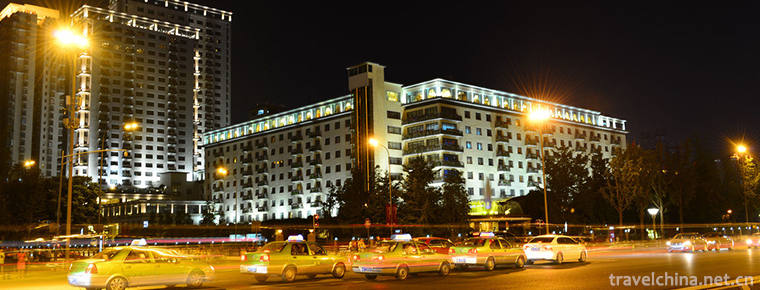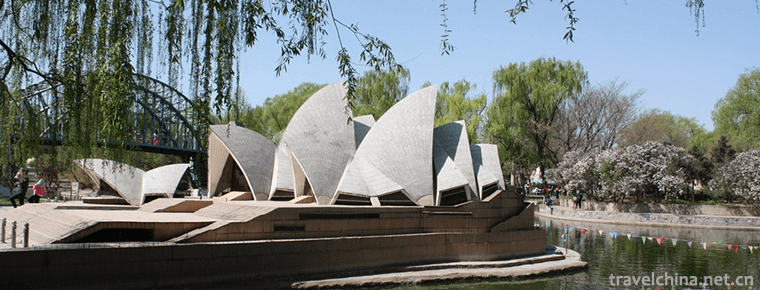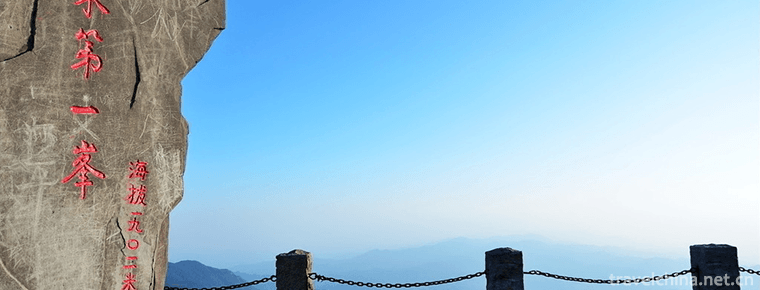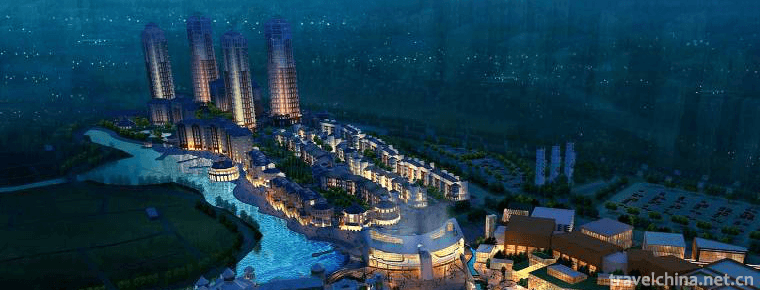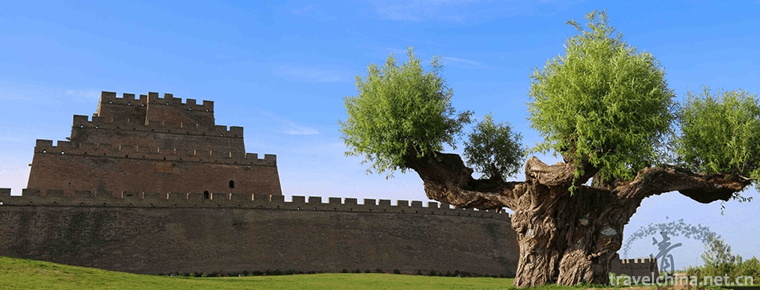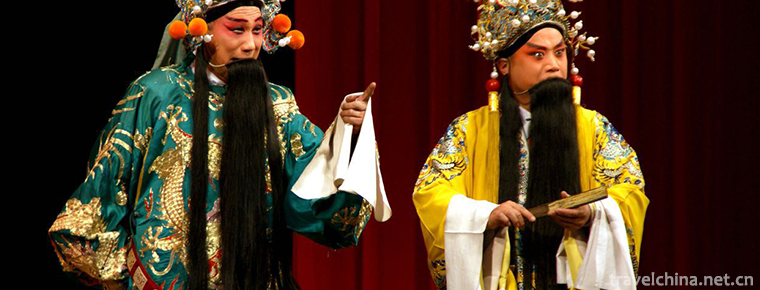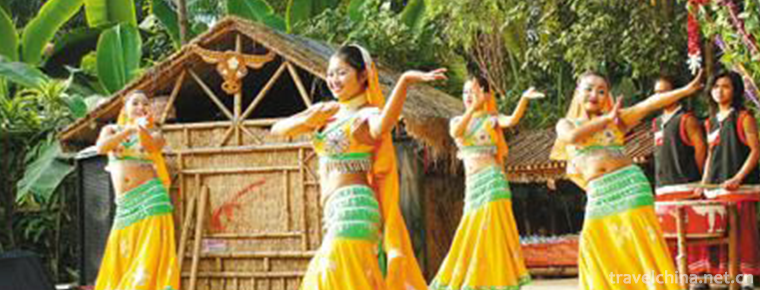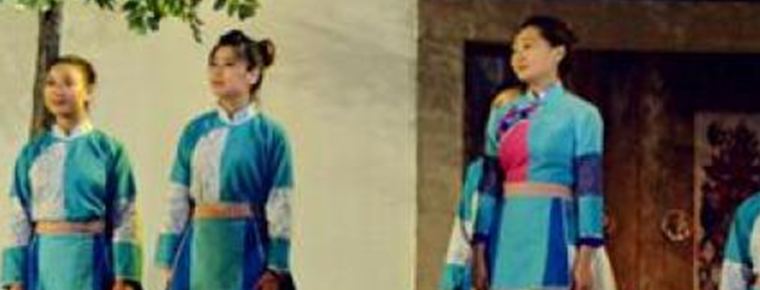Island Jinshan Temple
Island Jinshan Temple
Jinshan Temple, located in the northern part of Qingyun County, Dezhou City, Shandong Province, was built in the Sui Dynasty and flourished in the Tang Dynasty. It is said that the island Jinshan Temple was the place where Xuanzang, a great monk of the Tang Dynasty, came from. This is also one of the most famous legends of the temple. By the time of the Northern and Southern Divided Governance in the Jin and Song Dynasties, the Jinshan Temple on the island had reached its peak and became a famous monastery in the whole country.
In order to better promote the history and culture and restore the human landscape, in 2004, Jushi Qi Suping of Tianmu Mountain in Hangzhou decided to invest 80 million yuan to rebuild the Jinshan Temple in Qingyunhai Island. With the strong support of the local government, after nearly a year of careful preparation, the project was officially started in 2005. Now the Jinshan Temple on the island of Qingyun County is a national AAAA-level tourist attraction. Four scenic spots, Shifo Temple, Modern Wholesale Market of Small Commodities, Xianghai Chanlin and Qingyun Memorial Hall, were awarded "National AAAA Class Tourist Scenic Spot".
Basic introduction
The island Jinshan Temple consists of three parts, one street and one garden, namely the thousand-year-old ancient Temple Island Jinshan Temple, the Antique Commercial Street and the auspicious garden. It is a famous prayer tourist resort in northern China. It attracts guests from all directions with its magical legends and strong traditional cultural atmosphere.
The Jinshan Temple on Haidao is the largest Pure Land Monastery in North China.
The ancient island Jinshan Temple was built on an isolated island at the junction of the ancient Fenshui River and the ancient Jianjin River, so it was named the island Jinshan Temple.
Monasteries were built in Sui Dynasty and flourished in Tang and Song Dynasty. Jin Shi Geographic Records recorded the scenic spots at that time: "connecting thousands of acres, building in rows, incense is strong", and the popular saying "riding donkeys to close the mountain gate" is more popular among the people.
According to legend, Master Xuanzang, a prominent monk in the Tang Dynasty, grew up and studied Buddhism at Jinshan Temple on the ancient island.
The Temple Temple Tianwangdian Hall, Daxiong Palace, Tibetan Sutra Building, VIP Building and other buildings have great momentum, which are treasures in antique architecture. The magnificent architecture, the magnificent statue of Buddha and the chant Buddha will bring you into a wonderful realm of transcendence and refinement.
Ticket Price
At present, there is no admission fee in the scenic spot. The palace of the scenic spot inside the monastery is 20 yuan per person, and all the other scenic spots are free of charge.
Traffic information
Aviation. Qingyun County is 100 kilometers away from Jinan Yaoqiang International Airport. There are taxis running around the clock from the scenic spot to Jinan International Airport, and the traffic is very convenient.
Railway passenger transport. The scenic spot is 80 kilometers away from Cangzhou Railway Station (including Cangzhou Railway Station and the newly built Cangzhou West Station) and 120 kilometers away from Dezhou Railway Station (including Dezhou Railway Station and the newly built Dezhou East Station). There are taxis running day and night between the scenic spot and Cangzhou Railway Station, Cangzhou West Station, Dezhou Railway Station and Dezhou East Station. The traffic is very convenient.
Highway passenger transport. Qingyun County has convenient transportation, with Binde Expressway, National Highway 205, Provincial Highway 246 and 315 crossing vertically and horizontally. Highway passenger transport is very developed, with Beijing, Tianjin, Tang Dynasty and northeast provinces and cities in Beitong and Shanghai, Ningxia, Zhejiang and Guangzhou in the south. Qingyun Bus Station Address: Qingyun County Shangcheng Street, southeast of Xinhua Road intersection.
Main attractions
The gate of JueMen is the east gate of the scenic spot, also known as the "gate of JueMen", while the west gate of the past scenic spot is called the "gate of JueMen", which implies the realization of life and dedication to life.
The Ancient-style Street was built around the monastery with Hui style in Ming and Qing Dynasties, including East Street, West Street and South Street. Pink wall tiles, horsehead tilt angle, antique doors and windows... Little by little, it conveys a strong historical flavor.
Here you can buy beads, antique furniture, craft fans and other rich and colorful traditional cultural commodities, taste Buddhist vegetarian food, drink Buddhist tea, live in a Buddhist style hotel, feel the happiness and tranquility brought by the traditional way of life, is the perfect place for you to relax your body and mind, cultivate your sentiment.
The auspicious garden is located in the north side of the temple, including a gate (auspicious gate), a bridge (golden water bridge), a mountain (isolated hill), two halls (Wanfo Hall and Yuantong Hall), three lakes (three island lakes) and other scenic spots. It integrates the charm of the south of the Yangtze River with the characteristics of Buddhist culture. The flowing water of small bridges, pavilions, pavilions, lakes and mountains give people an indescribable beauty of artistic conception. The Hall of Ten Thousand Buddhas, 60 meters high, is built in imitation of the Temple of Heaven in Beijing, and is a landmark building in the surrounding areas.
The underground palace, with more than 1000 camphor wood carvings, coupled with sound and light, artistically displays the legendary scene of hell in front of the world. It is strange and mysterious. It will make you fully appreciate the charm of traditional causal culture and ghost and God culture.
Twenty-four Filial Piety Museum is a large-scale Wax Museum of filial piety culture theme in China. With wax art, 24 stories of filial piety, such as Yu Shun's plowing fields and Dong Yong's selling his body to bury his father, are presented in real scenes. There are 56 wax figures in the museum. They are very vivid, almost unreal and amazing.
Ancient Yanlingtai. Legend has it that the tomb of the eldest son of Yanling in the Spring and Autumn Period of Wu Dynasty is a graceful cemetery. When Jizi went to Qi, he died of illness on the way. He was buried here for the sake of not carrying a coffin. It is said that Confucius came here to observe and study the funeral. Later generations, in memory of Ji Zi's virtue, built more graceful tombs, forming a tall terrace, known as Yanlingtai.
There are also Tianwang Hall, Daxiong Palace, Tibetan Sutra Building, VIP Building, etc.
New temple
In 2004, Jushi Qi Suping of Tianmu Mountain in Hangzhou decided to invest 80 million yuan to rebuild Jinshan Temple on Qingyunhai Island. With the strong support of the local government, after nearly a year of careful preparation, the project was officially started in 2005.
The overall structure of the new monastery still continues the traditional layout of the "seven halls of Kalan" in Buddhist temple buildings. All buildings are situated in the north and facing the south, spread out according to the central axis, symmetrical left and right, clear primary and secondary, orderly.
Into the mountain gate, the first thing to be seen is the Temple of Heavenly Kings, in which there are six statues of Maitreya Buddha, the Four Heavenly Kings and Wei Pian. There are bell and drum towers on both sides of the temple. Whenever the melodious and heavy bell sounds, it will present a beautiful scene of "the ancient temple is fragrant in the morning and evening, and the golden bell rings in the Buddhist temple in the morning and evening". Step out of the Temple of Heavenly Kings, and face to face is the main hall of the Buddhist temple - Daxiong Palace.
There are eighteen Arhats on both sides of the hall.
Behind the Temple of Heavenly Kings are the Tibetan Sutra Pavilion and the abbot's building under construction, with East and West palaces on both sides. The palace is still built with classical architectural techniques of ancient temples, four-in-one corridors, eaves and arches, beams and painted buildings, exquisite and elegant.
Overlooking the Jinshan Temple, the buildings on the central axis are unfolded with a broken rhythm and a high-low and staggered melody, while the buildings on both sides of the axis are echoed by a centripetal gesture, forming an integrated space-time, showing both dignity and appropriateness, and without losing the elegant charm of Buddhist culture. Up to now, the main project of the monastery has been basically completed, and the remaining part is being accelerated construction. After the completion of the project, it will become the largest monastery in the border area between Hebei and Shandong.
The reconstruction of Jinshan Temple on the island not only restored a great historical and humanistic landscape, but also added a place for religious activities to Qingyun County. At the same time, its reconstruction is of great significance to the development of tourism industry and the expansion of opening up.
Jinshan Temple in Qingyunhai Island rebuilds Jinshan Temple on the old site of the ancient Jade Emperor Temple. The Temple incorporates the essence of Buddhist architectural art in China. Every building and statue shows a very high artistic value and cultural connotation, which makes people linger and forget to return. Become the most magnificent Jingzong Temple in Jiangbei, known as "North Jinshan". Qingyun strives to build three major tourism brands of "Famous Commercial and Trade City, Religious Holy Land and Ecological Jujube Township", and to improve five tourism systems, namely, market shopping tour, leisure vacation tour, Confucianism, Buddhism and Taoism culture tour, historical celebrity culture tour and eco-agricultural sightseeing tour.
Historical legends
The legend of Jinshan Temple on the island has a long history in Qingyun. The legend is very beautiful and the plot is moving.
The original island Jinshan Temple is located one mile west of Fenshuiwang Village, Qingyun County. It was built in the Sui Dynasty, but there is no way to verify when it was built.
According to legend, the monastery has a huge scale and covers more than 1000 mu. There is a saying that it is riding donkeys to close the mountain gate.
Tang Seng legend
According to legend, Tang monks grew up in the temple.
Xuanzang's ancestor is from Henan Province. He was born in an official family and his native place is Chang'an.
According to the anecdote of Qingyun County Chronicle compiled in the three years of the Republic of China, Chen Guangrui and his wife Yin Mantang went to Wudi County in Sui Dynasty (now Qingyun is north of Jiadian Village - Wudi Old City) to take office, and crossed the river by boat through Liu Village in Qingyun Zhimen. Liu Hong, a water thieves, saw Yin's charming and charming, and suddenly became vicious. The boat pushed Chen Guangrui into the river and drowned, forcibly occupying Yin's family.
At that time, Yin was pregnant and had to endure humiliation and steal his life.
After the baby was born, Liu Hong wanted to do more harm.
Yin sewed the cloth strip with his life experience on his child's breast, then hid the child in a wooden box and secretly put it into the river.
The wooden box drifted down the river to Jinshan Temple and was rescued by monks in the temple. Shortly afterwards, Yin died by himself.
Faming elder first entrusted his children to a nearby Kangjia village (the village was in the northwest corner of Taojia village in Qingyun Town, which had not existed for a long time), a Liang's breastfeeding, and later returned to the temple, commonly known as Hailiu and Shang, which was later Tang monk. Artists compiled the story into opera "upside down listening door", "Yin Mantang complaining" or commentary passages, which were handed down.
Legend of Ancient Yanlingtai
The original site of Yanlingtai is near the Daxiong Palace of Jinshan Temple on the present island. It is said to be the tomb of the eldest son of Jizha.
Ji Za was an outstanding statesman and diplomat of Wu State in the Spring and Autumn Period. He was sealed up in Yanling, also known as Jizi of Yanling.
Legend has it that when Jizha went to the State of Qi, his eldest son died of illness. He was buried here for the sake of not carrying a coffin. Later generations admired Jizi's righteousness and built his son's tomb when he was old, gradually forming a tall terrace called Yanling Terrace. Because of Gaolong cemetery, the local people also called it Gao Tomb Terrace.
Jizazi has been buried for more than 2500 years, and Yanlingtai should have a history of at least 2000 years.
festival activities
Every Spring Festival, Jinshan Temple Scenic Spot on the island holds Jinshan Temple Fair, during which there are special snacks and folk handicraft exhibitions, which has great influence in the surrounding areas. Qingyun folk has the folk custom of singing grand opera in the first month.
The Jinshan Temple scenic spot on the island invites theatre troupes to perform in the scenic spot every January.
Including: Beijing Opera, Lv Opera, Hebei Bangzi, Haha Opera and other traditional operas, attracting a large number of people around to watch.









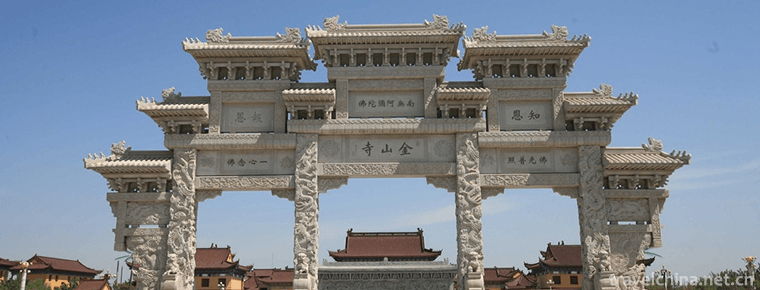
-
Privacy Policy
We takes users' information safety and privacy as our lifeline. Based on our basic principle "Users' needs are our first priority", we are committed to enhancing the transparency of informat.
Views: 1664 Time 2018-12-08 -
Chengdu JinJiang Hotel
Jinjiang Hotel is the first five-star hotel in southwest China. It is located in Renmin South Road, the main road of Chengdu City, adjacent to the famous Funan River and echoes Tianfu Square.
Views: 137 Time 2018-12-16 -
World Park
The World Park is located in Dabaotai, Huaxiang, Fengtai District, Beijing. It is 16 kilometers from the city center and 8 kilometers from Beijing West Railway Station. It is a national 4A-level sceni.
Views: 83 Time 2018-12-19 -
Guangdong First Peak Tourist Scenic Spot
Guangdong First Peak Tourist Scenic Area is the largest oasis on the Tropic of Cancer. It has a large area of primitive forests, stable forest ecosystem, dense evergreen broad-leaved forests.
Views: 126 Time 2019-01-13 -
Wuhan Haichang Polar Ocean World
Wuhan Haichang Polar Ocean Park is the first Ocean Park constructed by Haichang Group in central China. It is the fifth large-scale theme park covering the concept of polar and ocean.
Views: 182 Time 2019-02-24 -
Zhen Bei Tai
Zhenbeitai, World Heritage Site, National Key Cultural Relics Protection Unit. It is located on the top of Hongshan Mountain, 4 kilometers north of Yulin City, a famous national historical and cultura.
Views: 227 Time 2019-03-17 -
North Road Bangzi
Bangzi, also known as Shanglu Opera, is a local traditional drama in Datong, Shuozhou, Xinzhou and parts of Inner Mongolia and Hebei in northern Shanxi Province. It is one of the national intangible c.
Views: 152 Time 2019-04-04 -
Korean Crane Dance
Crane Dance of the Korean Nationality has a long history and is a unique dance performance form of the Korean Nationality in China. It has the national characteristics and the value of artistic resear.
Views: 193 Time 2019-04-16 -
Qing Opera of Wa Nationality
The Wa Qing Opera belongs to the high-pitched system, with different roles for men and women. The roles are similar to those of Sheng, Dan, Jing and Wei. Use a dye called "Red Drug" to colou.
Views: 107 Time 2019-06-25 -
the Wu Ballads
Wuge is the oral literary creation of the majority of the people in Wu dialect area, which originated in southeastern Jiangsu Province, and Suzhou is the central area for the generation and developmen.
Views: 135 Time 2019-06-29 -
Anhui University Of Technology
Anhui University of Technology is located in Anhui province. Ma'anshan The city is a multi-disciplinary university characterized by industry and industry. Ministry of science and technology With the s.
Views: 289 Time 2019-10-10 -
Education in Panzhihua
By the end of 2018, Panzhihua had 2 ordinary colleges and universities, 56 ordinary secondary schools, 7 secondary professional schools, 60 primary schools and 194 kindergartens. There are 26617 students in Colleges and universities, 72372 students in secondary schools.
Views: 332 Time 2020-12-14

